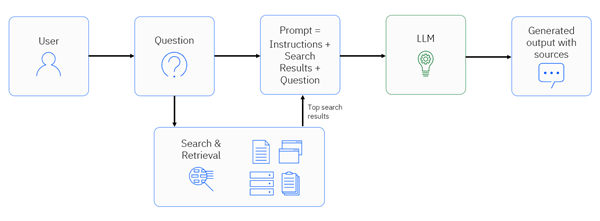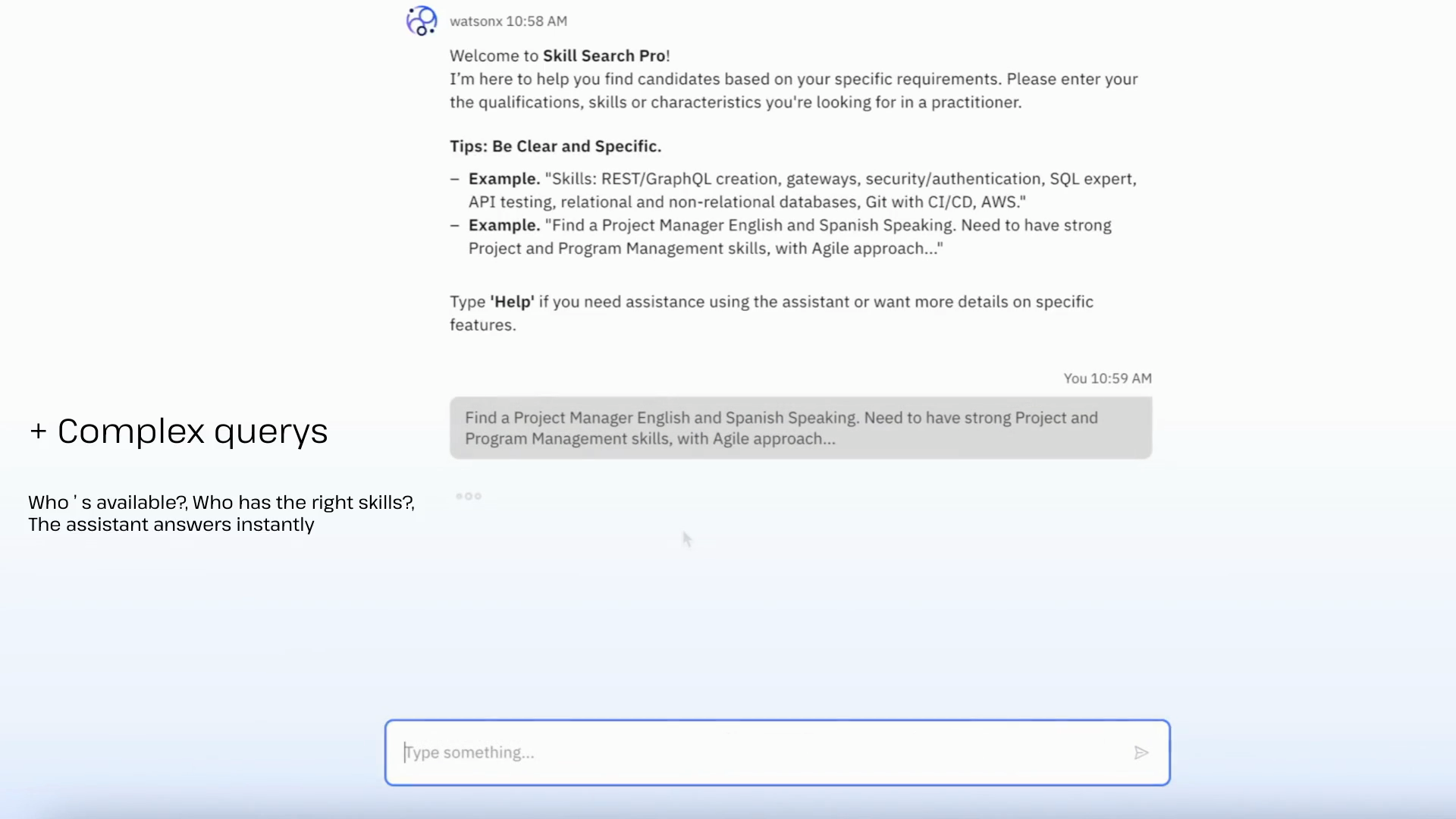Enterprise Talent Intelligence: IBM’s AI Workforce Assistant Driving Global Resourcing Precision
In the high-stakes, rapid-fire world of global IT consulting, speed and precision in matching the right talent to the right project can make or break client success. With thousands of experts across continents and billions in project value at stake, every minute counts. The IBM AI Workforce Assistant was built to transform this challenge into a competitive advantage—harnessing the power of advanced AI to instantly surface, evaluate, and deploy top talent. The result: smarter decisions, faster staffing, and unmatched accuracy in connecting the best minds to the most critical work.
The Challenge.
In IBM Consulting’s large-scale global operations—spanning tens of thousands of professionals across multiple regions—allocating the right talent to the right project is a race against time. Workforce Management teams must sift through thousands of practitioner profiles in North America and Latin America, often relying on manual searches or fragmented tools.
This process was time-consuming, inconsistent, and prone to mismatches, with accuracy rates averaging only 35%. The delays not only slowed project staffing but also risked client satisfaction and delivery timelines. The need was clear: a smarter, faster, and more reliable way to identify, evaluate, and deploy experts at scale—one capable of keeping pace with the speed and demands of a global consulting business.
A Human-Centered Approach to AI Innovation
We began with an in-depth discovery phase, engaging Workforce Management leaders and regional staffing teams to fully understand pain points, workflows, and business priorities. Using Design Thinking methodologies, we mapped the end-to-end talent allocation process, identified inefficiencies, and defined measurable success metrics.
Cross-functional workshops helped uncover essential capabilities for the new solution—such as multilingual search, skill normalization, and integration with existing staffing systems. Prototyping and iterative feedback cycles ensured that the design remained user-centric while meeting the operational demands of a large-scale IT consulting environment.
This structured, collaborative approach provided a clear blueprint for an AI-powered solution that could streamline, scale, and future-proof workforce allocation.
Architecting the Future of Talent Matching
Leveraging WatsonX Discovery for advanced search capabilities and WatsonX Assistant for natural language interaction, the solution was engineered to understand complex, conversational queries and return contextually relevant results.
A modular architecture allowed seamless integration with existing staffing systems, while a standardized skills taxonomy ensured consistency across regions. The user interface was crafted to be clear and actionable, enabling Workforce Management teams to move from query to candidate shortlist in seconds.
By combining AI capabilities with a user-centric design, we created a tool that not only accelerated staffing decisions but also elevated them—transforming talent allocation into a data-driven, strategic process.
Delivering Smarter, Faster, and More Strategic Talent Decisions with AI
An AI Workforce Assistant designed to transform how large organizations identify and deploy talent—delivering lightning-fast, context-aware matches that turn hours of manual searching into seconds of intelligent results.
Powered by Watson Discovery and Watson Assistant, the solution understands natural language queries, applies a standardized skills framework across regions, and integrates seamlessly with existing staffing systems. This approach boosted match precision from 35% to 70% while enabling teams to search as they think—simply, intuitively, and effectively.
More than a tool, it’s a strategic enabler, empowering Workforce Management teams to make faster, smarter, and more impactful staffing decisions at the speed of business.
Impact & Results
The AI Workforce Assistant transformed talent allocation into a fast, precise, and strategic process. Search accuracy improved from 35% to 70%, while search times dropped from hours to seconds—enabling Workforce Management teams to respond to staffing needs almost in real time.
By standardizing skills data across North and Latin America, the solution eliminated inconsistencies, improved match quality, and created a unified view of available talent. This not only accelerated project staffing but also increased client satisfaction by ensuring the right experts were assigned from the start.
Beyond operational gains, the platform became a catalyst for data-driven workforce planning, providing actionable insights for reskilling and future capability building—strengthening the organization’s ability to compete in a rapidly evolving market.
As Head of Digital Product Engineering, I led the end-to-end product strategy, design, and delivery of the AI Workforce Assistant, from the initial discovery workshops with stakeholders in México and Latin America to the launch of a fully integrated, enterprise-grade solution.
I facilitated Design Thinking sessions to uncover critical needs, defined the strategic roadmap, and prioritized features with the highest impact on speed, accuracy, and scalability. Within IBM Consulting’s large-scale workforce—spanning thousands of professionals across multiple geographies—a key challenge was navigating long-established processes while introducing a new AI-driven operating model. Data acquisition emerged as the most critical success factor, requiring close coordination with multiple systems and teams to ensure completeness, accuracy, and readiness for AI integration.
Additionally, the project demanded integrating the latest WatsonX technologies and features into existing infrastructure, guaranteeing compatibility, security, and performance at scale. My role included guiding cross-functional teams—spanning AI engineering, UX design, and data architecture—to ensure seamless execution and alignment with business objectives.
Through close collaboration with leadership, the solution not only met operational demands but also transformed workforce allocation into a strategic advantage, delivering measurable improvements in efficiency, accuracy, and client satisfaction.





